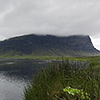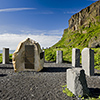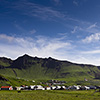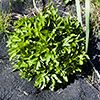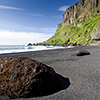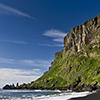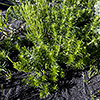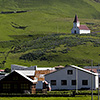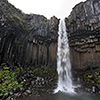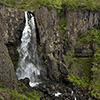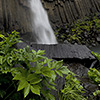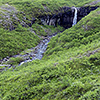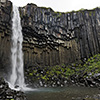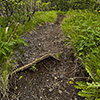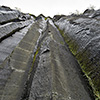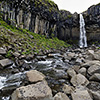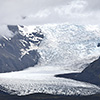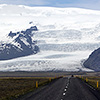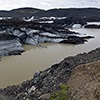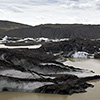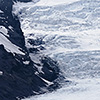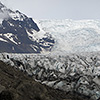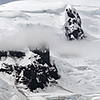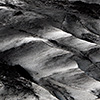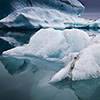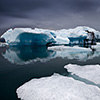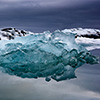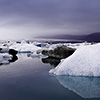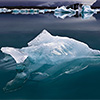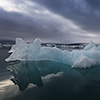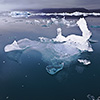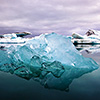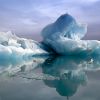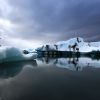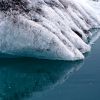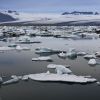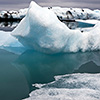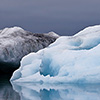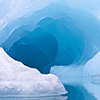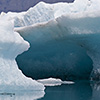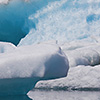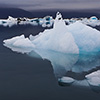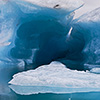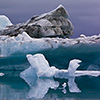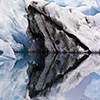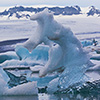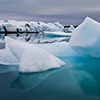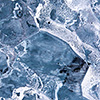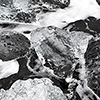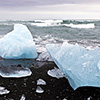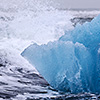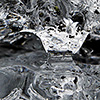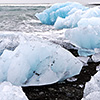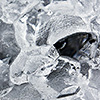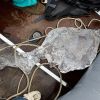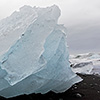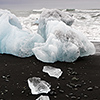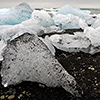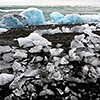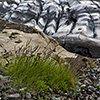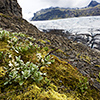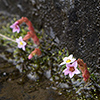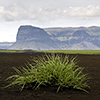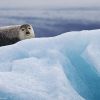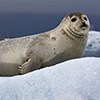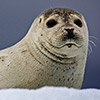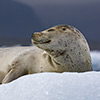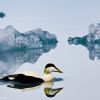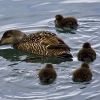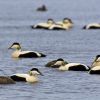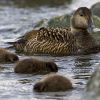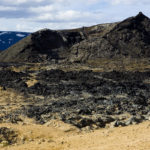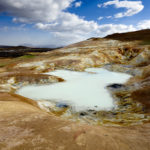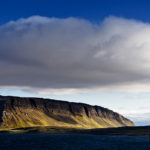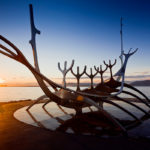Lava Deserts and perpetual Ice – Iceland’s Southeast
In the East of Vik the roads seem to become endless. The lush lupines-spangled meadows partially blend abruptly into deserts of black sand easily reaching the horizon. The ring road becomes more and more interrupted by small single lane bridges, spanning the small rivers and glacial runoffs of the Mýrdals- and Skeiðarársandur plains. At the end of that tunnel a true touristic star comes in sight: the glacial lagoon Jökulsárlón; film set for James Bond, Batman and Tomb Raider.
Before things become icy you really have to see and experience the Skaftafell National Park’s microclimate. It is a must. Since its proclamation back in 1967 it was extended three more times. Beside its wonderful hiking trails leading through lushest nature, the park is famous and appreciated for a very special waterfall. It is “fossing” again and this time in black, what is also the name giver of the picturesque Svartifoss. A bit climbing is necessary to discover that enjoyable play of water, which is framed by black and organ pipe-like columns of basalt hanging down around the stream of water. The woodland at the foot of the fall has a very own, even liquorice-like smell. It is like as if you would take a walk through a well-assorted candy store. And the most amazing of that omnipresent smell is: you don’t see any visibly blooming blossom…
Once you finished the 1,5km long hiking trail you stand in front of the bowl of a small but yet pretty noisy and about 10 meters high waterfall. The beautiful nature and the atmosphere let me pull off my shoes, roll up my pants and take a bath in the brook. The clear and clean water isn’t that cold as it seems to be in the first moment. Drinking out of the waterfall is possible without worries. In fact you can drink out of the most springs of Iceland. The water of more or less all springs contains almost always sulphur to a greater or lesser extent; something that is clearly noticeable by smelling at it. In water soluble sulphur isn’t toxic at all. In “case of emergency” too many sulphates might “simply only” result more or less heavy diarrhoea (attacks). I am not sure if my attack was caused by too many sulphates in the water or by enjoying too much Hákarl… :-)
When heading east from the Skaftafell National Park then you surely meet a little turnoff from the ring road, a gravel route leading to the nearby glacier tongue and the first bigger glacial lagoon, the Breiðárlón, originating from the Fjallsjökull glacier. The lake doesn’t really have lots of icebergs on offer; water and ice are often quite dirty due to lots of glacial sediment and volcanic ashes. Much more interesting is that you can get really close to the glacier itself. But keep off your hands from doing that without being experienced, or respectively without a guide. Slightly thawed crevasses are often only covered by a thin layer of ice, not strong enough to withstand a person. But surely they are pretty deep still cold as hell inside. Nobody wants to end up like Ötzi the Iceman…
The spectacular Jökulsárlón lagoon is about 160 meters deep and Iceland’s third deepest spot. It is located at the foot of the Breiðamerkurjökull glacier, an outlet or better to say tongue of the huge Vatnajökull. The glacier is constantly calving and up to 10 meters high icebergs are floating in the lagoon. Well, 10 meters regarding the visible part above the water surface, it’s common currency that 90 percent are below the water surface.
The sea level, respectively the Atlantic Ocean, is often mentioned as Iceland’s deepest spot. That is not correct since already the Jökulsárlón beats the sea level by its depth of 160 meters. The geologists from Reykjavik estimate that the depression under the Vatnajökull glacier has a similar depth like the Dead Sea (~400m). Above that depression sits at least 1 kilometre of ice; an incredible mass of frozen water being under biblical pressure. The last eruption of the Grimsvötns back in 1996 visualised the strength of that inconspicuous elemental force.
The eruption took place under the Vatnajökull glacier and melted down parts of the perpetual ice. At some point a natural barrier couldn’t resist the pressure of that subsurface lake anymore and within ticks the energy of unimaginable 45 million litres of water per second has been set free. Near the turnoff to Skaftafell National Park a massive bridge girder, at least as thick as a thigh and made of steel, was put up to serve as a monument. That girder is distorted like a cheap paper clip.
Missing the ice lagoon is literally impossible. On the one hand its maritime runoff is spanned by the only chain bridge far and wide; on the other hand the bunch of cars standing around a small house leaps out at you. Search for the “Man in the yellow Vest” to book a boat ride on the lagoon. Generally speaking that is a 30 minutes lasting ride with an amphibious vehicle and 10 other tourists.
Much more intimate is exploring the Jökulsárlón with a Zodiac rubber dinghy. With pleasure the tillerman is ramming the icebergs with the words “Hey man, you look a bit like Di Caprio…!” – Finally I was happy about an even cloudy sky, since it gave the lagoon an incredibly mystic evening light mood. The humidity transported by the Ocean tries to run up the southern slope of the Vatnajökull massif. The coldness of the giant glacier is often an insurmountable obstacle; they tight and tighter. These compact clouds are able to fade the evening sunlight into even violet… Hopefully the perpetual ice will remain true to itself and will not give way fully to the idiocy of capitalism.
Due to the pressure of the glacier glacial ice is highly compact and has almost no air pockets. Hence it is melting much more slowly than usual ice. The surf throws ice blocks that already left the lagoon towards the Ocean, back onto the beach, where they are dying drop by drop a slow death. On the way to the beach you should watch out since the path leads through a nesting area of Artic terns. They don’t hesitate to attack you group-wise. Very precise flight manoeuvres, only centimetres above your head are the one thing. The other thing is a well-aimed shoot of excrements ;-) In entire Iceland I didn’t meet Arctic terns being that aggressive.
In the lagoon itself lots of animals can be watched. Beside the gurgling sounds of the brightly feathered Eider males being on the hunt for girls, there are often seals taking a sunbath on the ice floes. Not far away from Jökulsárlón is a larger nesting site of Artic terns and also giant grey-brown Skuas are regulars as they seem to love flying through a forest of iceberg peaks.
On the way to Jökulsárlón I got caught shortly after Vik… For a moment I didn’t watch the speed and it didn’t take much time until I saw blue lights flashing. Despite a draconic penalty of 200 Euros for being only 20km/h too fast, I met a quite nice and relaxed police officer, who was doing his service far away from the German way policemen approach people; that is without the usual lording over people and egotism. Each summer about 40 people are dying in more or less horrible car accidents; against the background of Iceland having only 300.000 inhabitants that is a quite high number. The basic reason of suchlike high penalties is that driving conditions in Iceland have quite some surprises on offer. For example swans having a low-altitude flight, sudden holes in the clouds and blinding sun, rough potholes, slippery roads and last but not least oncoming traffic.
